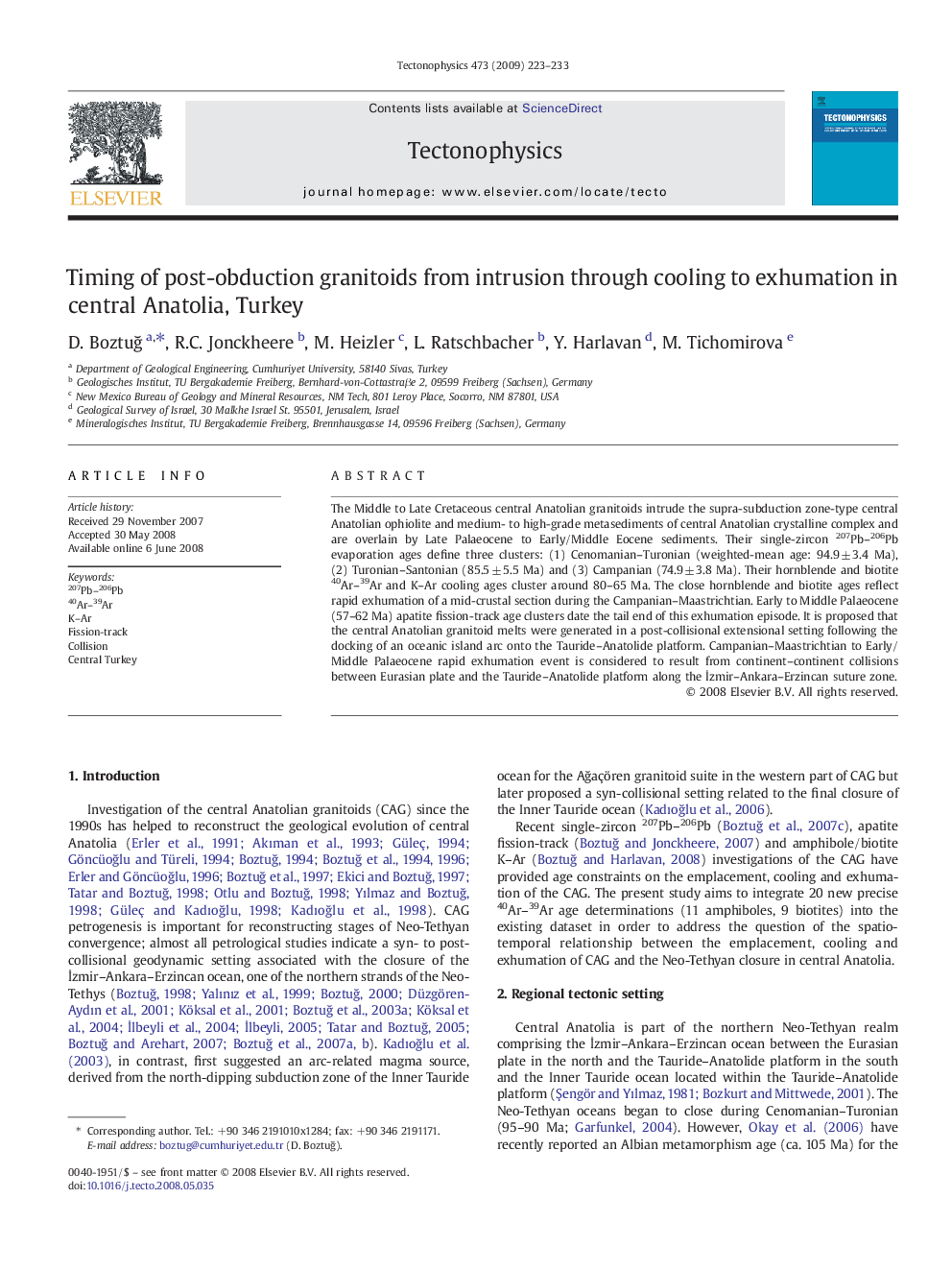| Article ID | Journal | Published Year | Pages | File Type |
|---|---|---|---|---|
| 4694003 | Tectonophysics | 2009 | 11 Pages |
The Middle to Late Cretaceous central Anatolian granitoids intrude the supra-subduction zone-type central Anatolian ophiolite and medium- to high-grade metasediments of central Anatolian crystalline complex and are overlain by Late Palaeocene to Early/Middle Eocene sediments. Their single-zircon 207Pb–206Pb evaporation ages define three clusters: (1) Cenomanian–Turonian (weighted-mean age: 94.9 ± 3.4 Ma), (2) Turonian–Santonian (85.5 ± 5.5 Ma) and (3) Campanian (74.9 ± 3.8 Ma). Their hornblende and biotite 40Ar–39Ar and K–Ar cooling ages cluster around 80–65 Ma. The close hornblende and biotite ages reflect rapid exhumation of a mid-crustal section during the Campanian–Maastrichtian. Early to Middle Palaeocene (57–62 Ma) apatite fission-track age clusters date the tail end of this exhumation episode. It is proposed that the central Anatolian granitoid melts were generated in a post-collisional extensional setting following the docking of an oceanic island arc onto the Tauride–Anatolide platform. Campanian–Maastrichtian to Early/Middle Palaeocene rapid exhumation event is considered to result from continent–continent collisions between Eurasian plate and the Tauride–Anatolide platform along the İzmir–Ankara–Erzincan suture zone.
